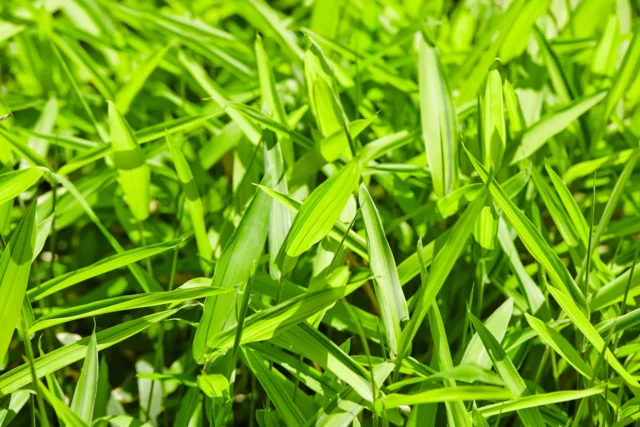
A lush, velvety green lawn not only adds aesthetic appeal to your home but also serves as a welcoming outdoor space for relaxation and recreation. Whether you’re starting from scratch on a barren patch of soil or aiming to revitalize a lackluster lawn, the process of planting grass seed can be both satisfying and transformative.
In this comprehensive guide, we’ll delve into the 10 crucial steps that will empower you to plant grass seed successfully, resulting in a vibrant, healthy, and envy-inducing lawn that you can enjoy for years to come.
Step 1: Test and Amend the Soil
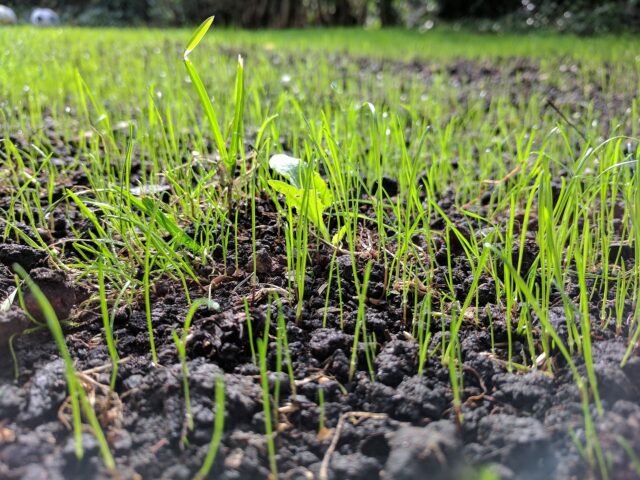
The quality of your soil directly impacts the health of your grass. Conduct a soil test to determine its pH level and nutrient content. This information will guide you in making the necessary amendments to optimize soil conditions.
Adjustments may involve adding lime to balance pH or incorporating organic matter like compost to enhance soil structure and fertility. By creating a hospitable environment, you set the stage for strong and resilient grass growth.
Step 2: Prepare the Soil
Before laying down the grass seed, it’s crucial to prepare the soil adequately. Begin by removing any debris, rocks, or large weeds from the area. A rake can be used to break up clumps of soil and create a level surface.
This process ensures that the grass seed makes direct contact with the soil, promoting germination. Additionally, consider aerating the soil if it’s compacted, as this allows for better water and nutrient penetration.
Step 3: Choose the Right Grass Seed
The foundation of a successful lawn starts with choosing the appropriate grass seed for your specific needs. There are several grass varieties available, each adapted to various climates, soil types, and usage patterns. To make an informed choice, research the grass types that thrive in your region. If your area experiences hot summers and cold winters, cool-season grasses like Kentucky bluegrass or fescue might be ideal.
On the other hand, if you reside in a warmer climate, choosing Celebration Bermuda grass will be more suitable. Assess factors such as shade tolerance, drought resistance, and foot traffic to select the grass seed that aligns with your lawn’s intended use.
Step 4: Seed and Seed Spreading
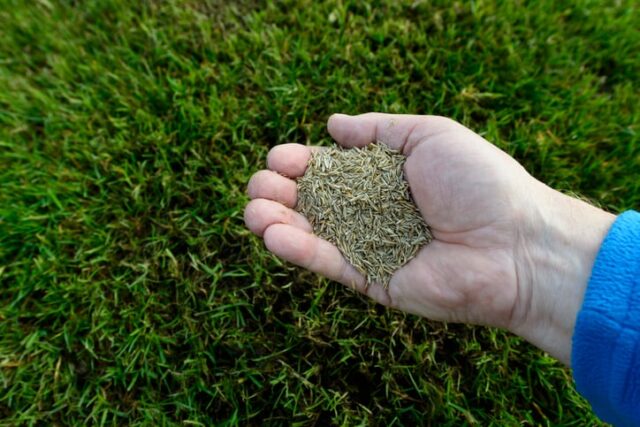
Using a seed spreader, uniformly distribute the chosen grass seed across the prepared soil. The recommended seeding rate can typically be found on the seed packaging. To ensure even coverage, apply half of the seed in one direction and the remainder perpendicular to it.
This cross-hatching method minimizes bare patches and promotes a consistent density of grass across the entire area.
Step 5: Rake and Roll
Gently rake the soil after seeding to lightly cover the grass seed with a thin layer of soil. This protective covering shields the seeds from birds and wind while still allowing sunlight to reach them.
After raking, use a lawn roller to press the seeds into the soil gently. This step enhances seed-to-soil contact, which is essential for successful germination.
Step 6: Watering Routine
Watering is a critical aspect of the germination process. To ensure that the seeds remain consistently moist, establish a regular watering routine. Opt for a fine mist or a gentle spray attachment on your hose to prevent dislodging the seeds.
Watering two to three times a day for shorter durations is more effective than infrequent, heavy watering. Aim to keep the soil surface visibly damp but avoid creating puddles.
Step 7: Patience for Germination
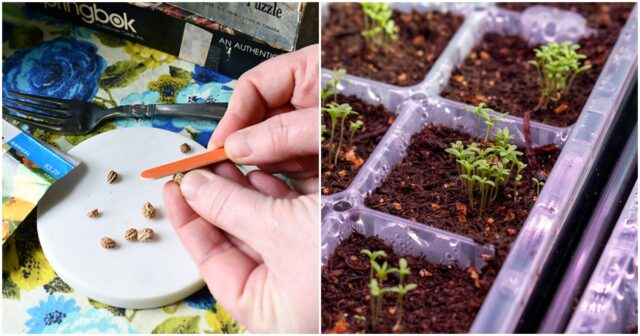
Germination is an exciting phase of lawn establishment, but it demands patience. Factors such as grass variety, temperature, and moisture levels influence the speed of germination. On average, grass seedlings begin to emerge within 7 to 21 days.
Throughout this waiting period, maintain your diligent watering routine, which is crucial for the young seedlings’ survival.
Step 8: Gradual Mowing
Once the grass reaches a height of approximately 3 inches, it’s time for the inaugural mowing. Set your lawnmower’s blade to its highest setting to avoid scalping the young grass. Trim no more than one-third of the grass height in a single mowing session.
Regular mowing encourages root development and lateral growth, leading to a denser and healthier lawn over time.
Step 9: Fertilize for Growth
After the second or third mowing, introduce a balanced fertilizer to the lawn. A fertilizer with a nitrogen-phosphorus-potassium (N-P-K) ratio of 10-10-10 or 20-10-10 can provide essential nutrients for robust growth.
Follow the manufacturer’s guidelines for application rates to avoid over-fertilization, which can harm the grass and the environment. Fertilization enhances the lawn’s color, density, and overall vigor.
Step 10: Maintenance and Care
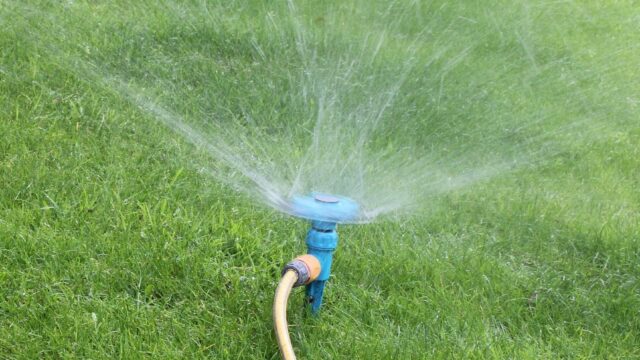
Maintaining a lush lawn involves ongoing care and attention. Regular mowing, generally following the one-third rule, prevents the grass from becoming too tall and promotes a uniform appearance. Water the lawn deeply and infrequently to encourage deep root growth and drought tolerance.
Address weed and pest issues promptly to prevent them from overtaking your lawn. Aeration and overseeding every few years can rejuvenate the lawn’s health and appearance.
Final Thoughts
Transforming a barren plot of land into a verdant oasis through grass seed planting is a gratifying journey that reaps rewards for years to come. The process, although requiring careful attention to detail, is accessible to both beginners and experienced gardeners.
By meticulously selecting the right grass seed, nurturing the germinating seedlings, and providing ongoing care, you can create a vibrant and resilient lawn that is not only visually appealing but also functional for outdoor activities and relaxation.
As you embark on this endeavor, remember that the path to a lush lawn is paved with patience, knowledge, and a genuine appreciation for the beauty of nature’s green tapestry.






